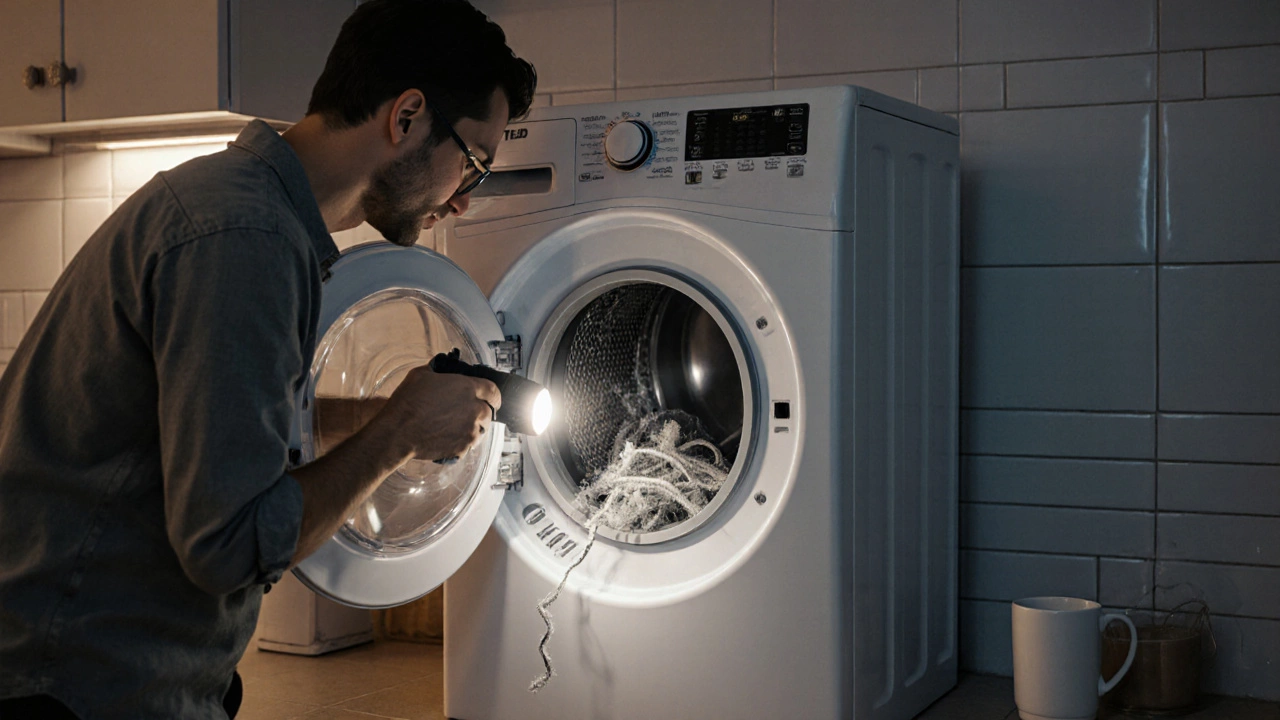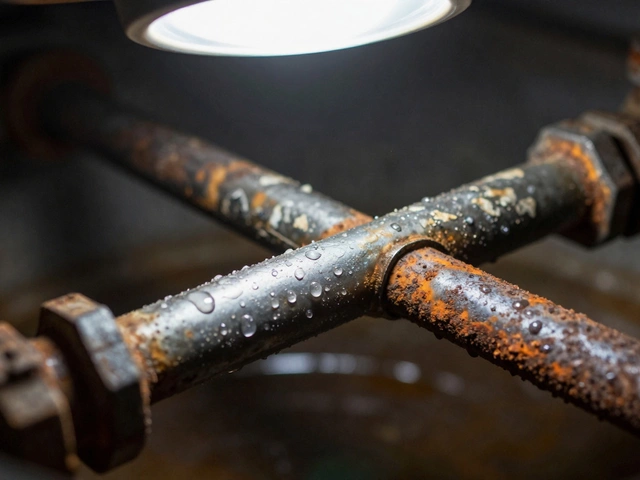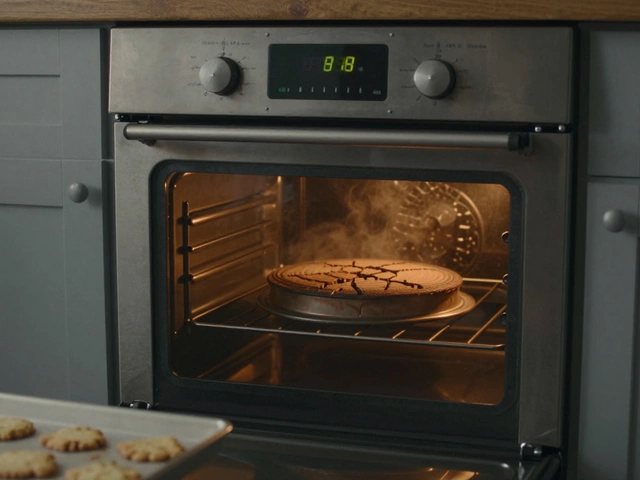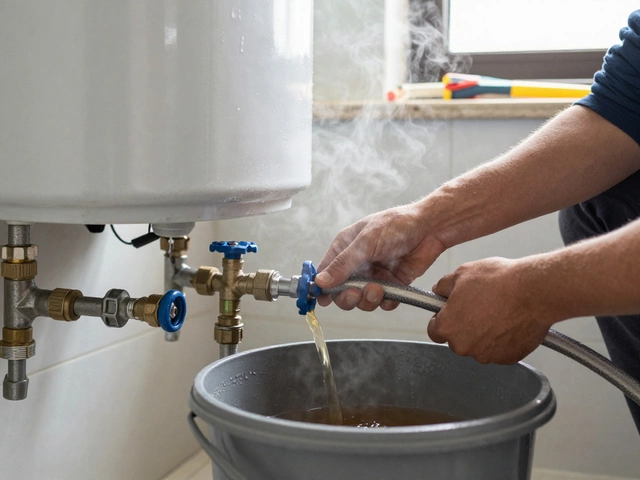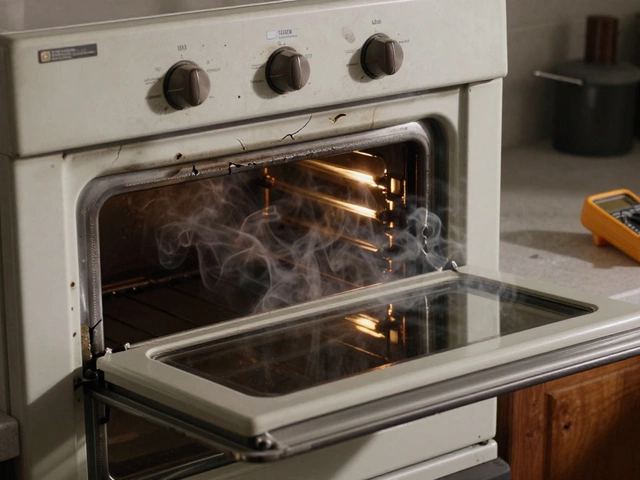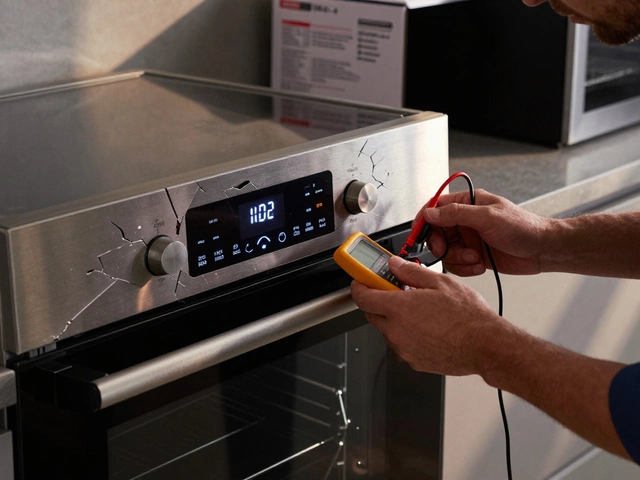Tumble Dryer Repair vs Replacement Calculator
Repair Cost Analysis
When your tumble dryer fails to spin, won’t heat, or makes loud noises you start wondering whether a fix will save you money or if it’s time to buy a new one. The answer isn’t a simple yes or no - it depends on the fault, the age of the unit, the cost of parts, and how much you care about energy use and waste. This guide walks you through the most common problems, how to size up repair quotes, when a replacement makes sense, and what to look for in a reliable repair service.
Key Takeaways
- Typical repair costs range from $80 to $250 NZD; replacement starts around $500 for basic models.
- If the dryer is older than 8‑10 years, a new, energy‑efficient model often pays for itself in 2‑3 years.
- Parts that fail most often - thermal fuse, drum belt, heating element - have clear price points that help you compare repair vs replace.
- Environmental impact matters: repairing saves up to 80 % of the embodied carbon compared with discarding a unit.
- Choose a repairer who offers a written estimate, warranties parts, and follows the New Zealand Consumer Guarantees Act.
Common Tumble Dryer Faults and What They Cost
Before you can decide if a fix is worth it, you need to know what’s actually broken. Here are the five most frequent issues and the typical price range for parts and labour in New Zealand (2025 data).
| Fault | Typical Part Cost (NZD) | Labour (hrs) | Total Repair Estimate (NZD) | Notes |
|---|---|---|---|---|
| Thermal fuse failure | $30‑$50 | 0.5‑1 | $80‑$120 | Often caused by lint blockage; easy fix. |
| Drum belt break | $20‑$40 | 0.5‑1 | $70‑$110 | Common in older vented models. |
| Heating element (resistance coil) | $80‑$150 | 1‑2 | $150‑$250 | Key for heat‑pump dryers; part price varies. |
| Motor or drum rollers | $100‑$200 | 1‑2 | $180‑$300 | Higher labour if motor needs replacement. |
| Control board / electronics | $120‑$250 | 1‑2 | $200‑$350 | Often a sign the unit is aging. |
These numbers give you a quick reference when a technician hands you a quote. If the total exceeds half the price of a comparable new dryer, it’s time to look at replacement.
How to Size Up a Repair Quote
Not every quote is created equal. Use the following checklist to avoid surprise costs:
- Itemised breakdown - labour, parts, and any travel fees should be listed separately.
- Warranty coverage - reputable repair shops guarantee parts for at least 12 months.
- Age of the appliance - a dryer older than 8‑10 years typically has a lower resale value, so you’re essentially paying for a short‑term fix.
- Energy rating comparison - newer models often have a 30‑50 % lower electricity draw, which can offset a higher upfront cost.
- Alternative solutions - ask if cleaning the lint filter or vent hose might solve the problem before parts are replaced.
When you have a clear picture, you can calculate the break‑even point - the number of months it will take for the energy savings of a new dryer to outweigh the repair expense.
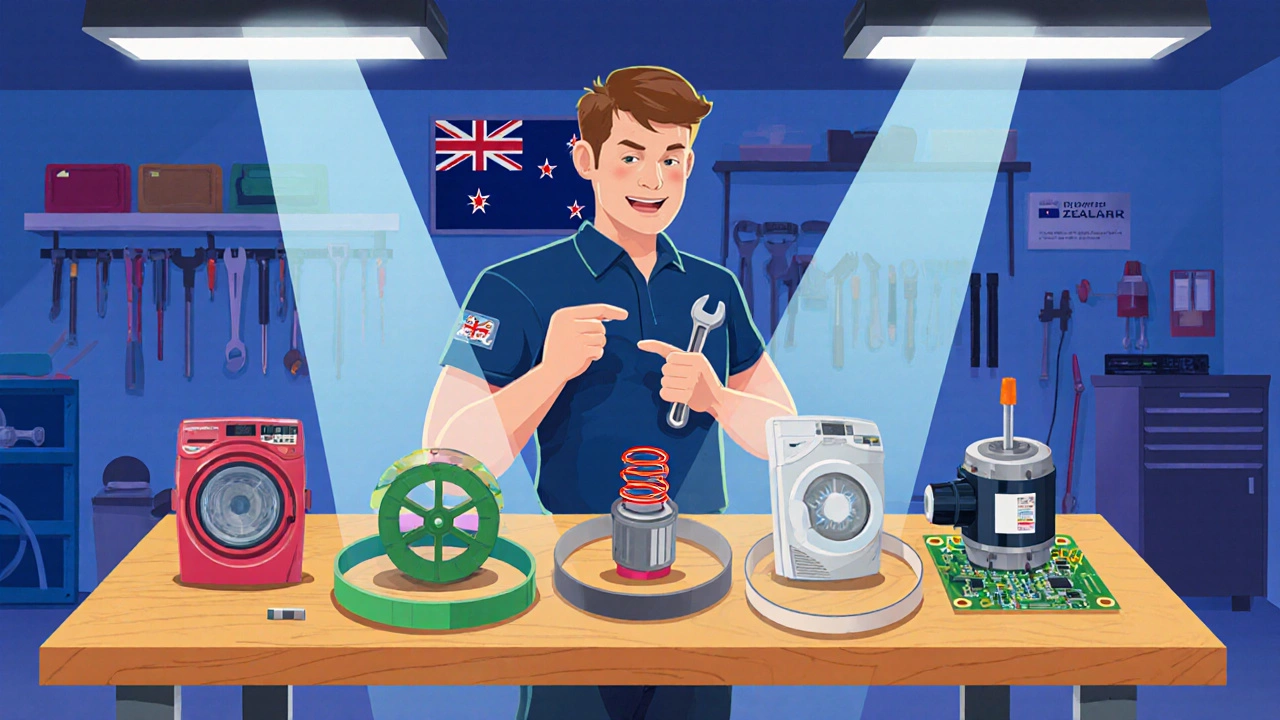
When a Replacement Makes More Sense
Even a perfectly affordable repair isn’t always the smartest move. Here are three scenarios where buying a new dryer is the smarter play:
- Age & wear - If the unit is >10 years old, the likelihood of another fault within the next 2 years is high.
- Energy efficiency gap - Vented dryers with an A‑rating consume roughly 1.5 kWh per cycle, while modern heat‑pump dryers (A+++ rating) use under 0.7 kWh. The annual electricity bill can drop by $150‑$250 NZD.
- Repeated repairs - More than two paid repairs in the last 12 months signals a failing system.
In such cases, the upfront cost of a new heat pump dryer that recycles warm air instead of venting it outside (typically $900‑$1,200 NZD) can be recovered through lower energy use and the peace of mind of a fresh warranty.
Environmental and Energy Considerations
Repairing a dryer keeps most of the embedded manufacturing energy in the ground. A life‑cycle analysis from the New Zealand Ministry for the Environment shows:
- Manufacturing a new dryer emits ~1,200 kg CO₂e.
- Repairing avoids 80‑90 % of that footprint.
- Recycling programmes recover up to 70 % of metal components, further reducing waste.
If you’re environmentally conscious, ask the technician whether they partner with a recycling program that handles end‑of‑life appliances responsibly. Proper disposal can also earn you a small council rebate in some NZ cities.
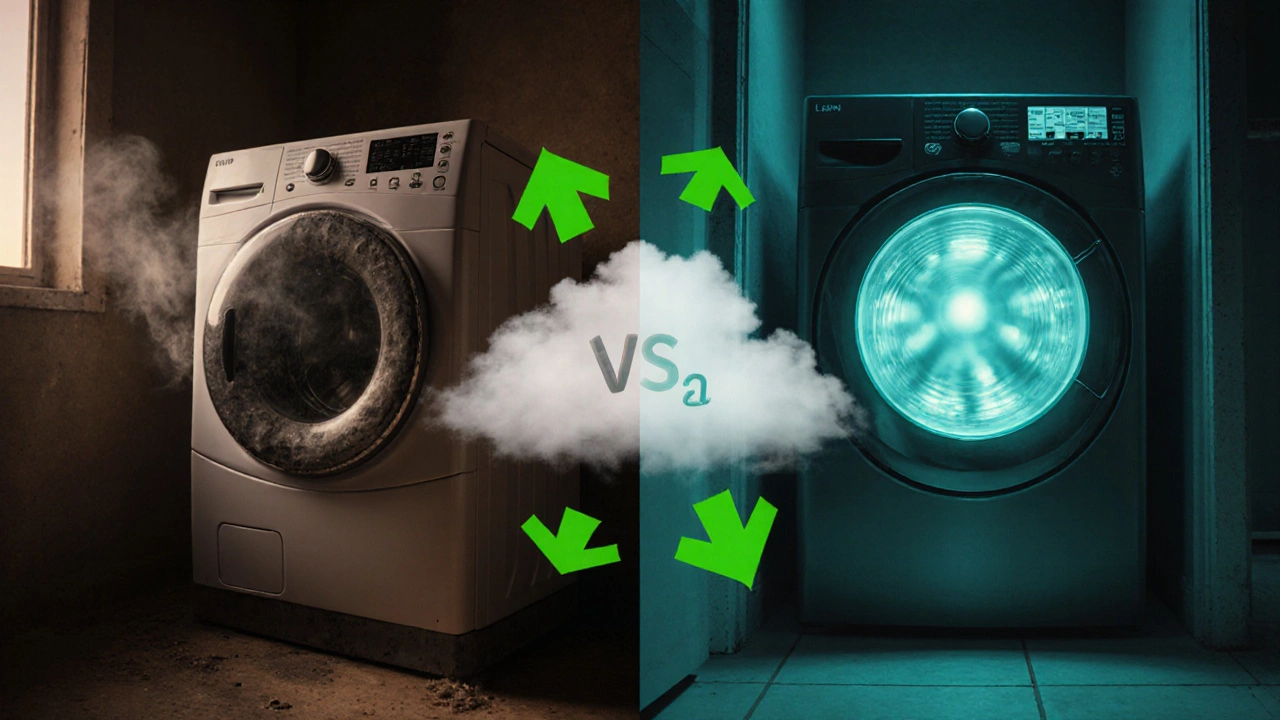
Finding a Trustworthy Repair Service
Not all repair shops are equal. Here’s a quick guide to selecting a technician who will give you a fair quote and a solid guarantee.
- Check credentials - Look for a licence under the New Zealand Consumer Guarantees Act which obliges service providers to deliver satisfactory work. Reputable firms will display their registration number.
- Read reviews - Google and local forums like Neighbourly often have real homeowner feedback.
- Ask about parts sourcing - Genuine OEM parts cost more but last longer; cheap off‑brand parts can lead to repeat failures.
- Get a written estimate before any work starts. Include a clause that the job will not proceed without your approval if additional parts are required.
- Warranty on labour - Trusted appliance repair technicians are often insured and offer at least a 12‑month guarantee on workmanship.
In Wellington, several community‑approved firms specialize in dryer repairs and can provide a free diagnostic visit. A quick phone call and description of the symptom will usually get you a ball‑park figure within 24 hours.
Decision Checklist - Repair or Replace?
Print or screenshot this list and run through it when you receive a quote.
- Is the dryer older than 10 years?
- Is the fault a simple part (thermal fuse, belt) under $150?
- Will the repair cost exceed 50 % of a comparable new unit?
- Will a new model cut my electricity bill by at least $150 per year?
- Do I have a reliable recycling option for the old dryer?
If you answer “yes” to three or more, lean toward replacement. If the dryer is relatively new, the fault is cheap, and you value keeping the appliance out of landfill, repairing is likely the better call.
Frequently Asked Questions
How long does a typical tumble dryer repair take?
Most common fixes - thermal fuse, drum belt, or lint‑screen cleaning - can be done in under an hour. More complex jobs, like replacing a motor or control board, usually require 1‑2 hours plus the time to order parts.
Can I fix a dryer myself without voiding the warranty?
If the dryer is still under the manufacturer’s warranty, opening it yourself often voids that coverage. For out‑of‑warranty units, a DIY approach is fine as long as you follow safety precautions and use the correct replacement parts.
Is a vented dryer cheaper to repair than a heat‑pump dryer?
Generally, yes. Vented dryers have simpler heating elements and fewer electronic controls, so parts like thermal fuses and belts are cheaper. Heat‑pump dryers use more sophisticated coils and sensors, which can raise both parts and labour costs.
What should I do with a broken dryer that I decide not to repair?
Arrange a collection through a local recycling centre or a retailer’s take‑back scheme. In Wellington, the City Council offers a free bulky‑goods pickup for appliances that are no longer functional.
How much can I expect to save on electricity with a new heat‑pump dryer?
A typical vented dryer uses about 1.5 kWh per load, while a heat‑pump model uses around 0.7 kWh. If you do 5 loads a week, the yearly saving is roughly 200 kWh, which translates to about $150‑$200 NZD at the 2025 residential rate.

